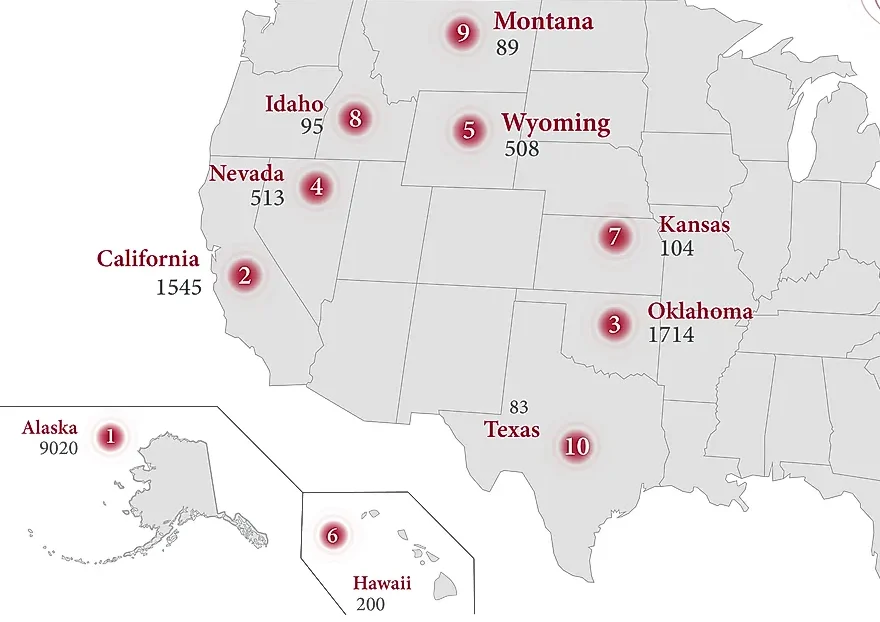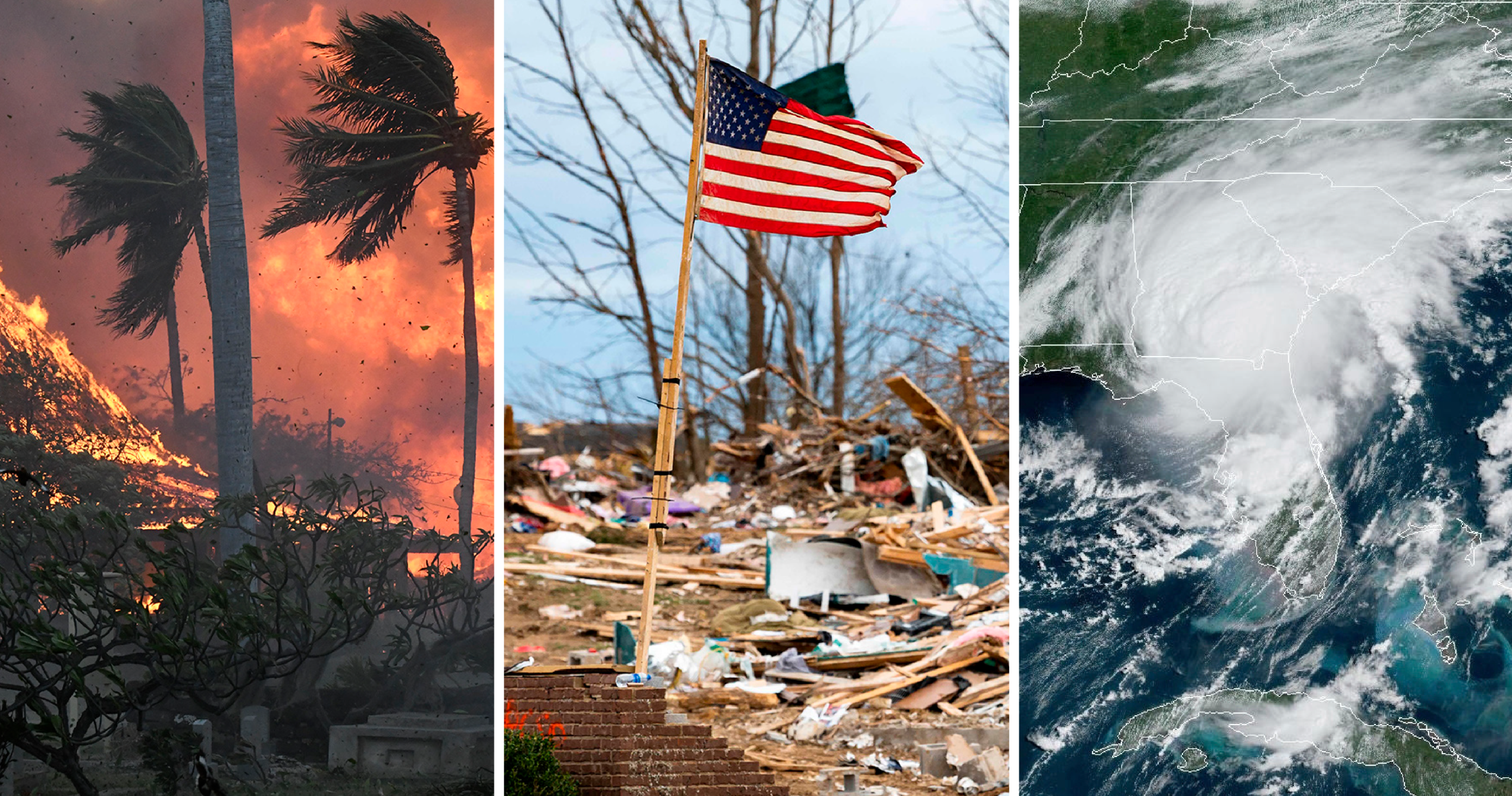Earthquakes are a natural hazard that can strike without warning, causing widespread damage and disruption. While some areas of the United States are known for their seismic activity, others may come as a surprise. Understanding which states face the greatest earthquake risks is essential for preparedness and safety.
Seismic activity in the U.S. is primarily influenced by tectonic plate movements, fault lines, and historical earthquake records. While the western states experience the most frequent and powerful quakes due to their location along the Pacific Ring of Fire, significant seismic risks also exist in the central and eastern regions https://www.livescience.com/planet-earth/earthquakes/nearly-75-of-the-us-is-at-risk-from-damaging-earthquakes-new-map-reveals.
California: The Earthquake Capital of the U.S.

California is the most earthquake-prone state, with thousands of tremors recorded each year. The state is home to the San Andreas Fault, one of the most well-known and active fault lines in the world. This massive fault stretches nearly 800 miles through California and has been responsible for some of the most devastating earthquakes in U.S. history, including:
- The 1906 San Francisco Earthquake, which destroyed much of the city and caused fires that burned for days.
- The 1989 Loma Prieta Earthquake, which heavily impacted the San Francisco Bay Area.
- The 1994 Northridge Earthquake, which caused extensive damage in Los Angeles.
Beyond the San Andreas, California has numerous fault systems that pose risks to cities like Los Angeles, San Francisco, and San Diego. Scientists warn that a major earthquake along the San Andreas Fault—sometimes called “The Big One”—is inevitable, making earthquake preparedness essential for residents.
Alaska: The State with the Most Earthquakes
Alaska experiences more earthquakes than any other U.S. state, with thousands of tremors occurring each year. This is due to its location along the boundary of the Pacific and North American tectonic plates. Some of the most powerful earthquakes ever recorded in North America have occurred in Alaska, including:
- The 1964 Great Alaska Earthquake, a magnitude 9.2 event, which remains the second-largest earthquake recorded worldwide.
- Numerous high-magnitude earthquakes that strike remote regions but rarely cause significant human casualties due to the state’s low population density.
Despite the high frequency of earthquakes, most occur in unpopulated areas, reducing their overall impact. However, coastal communities remain vulnerable to tsunamis triggered by seismic activity.
Washington and Oregon: The Threat of the Cascadia Subduction Zone
The Pacific Northwest faces a serious earthquake threat due to the Cascadia Subduction Zone, a massive offshore fault capable of producing a megathrust earthquake of magnitude 8.0 or higher. The last known major event along this fault occurred in 1700, and geological evidence suggests that another could happen in the near future.
Cities such as Seattle and Portland are at significant risk, not only from strong shaking but also from landslides, infrastructure damage, and tsunamis. The region’s soft soils and densely populated urban areas make it especially vulnerable to long-term damage in the event of a major quake.
Nevada: A Surprisingly Seismic State
Nevada ranks among the most seismically active states in the country, even though it is not typically associated with large earthquakes. The state has numerous fault lines running through its landscape, with cities like Reno, Carson City, and Las Vegas experiencing frequent tremors. While most quakes are small, Nevada has a history of significant seismic events, and experts warn that the potential for a large earthquake remains.
Hawaii: Volcanic Earthquakes Add to the Risk
Hawaii’s seismic activity is closely linked to its volcanic activity, particularly on the Big Island, where Kilauea and Mauna Loa are among the world’s most active volcanoes. Many of the earthquakes in Hawaii are triggered by magma movement beneath the surface, which can also lead to volcanic eruptions.
Strong earthquakes in Hawaii can cause landslides, infrastructure damage, and even tsunamis, making them a significant concern for both residents and tourists.
Utah: The Wasatch Fault and Earthquake Risk
Utah is another state with a significant earthquake risk due to the Wasatch Fault, which runs along the western edge of the Rocky Mountains. Salt Lake City and surrounding areas are particularly vulnerable, with geologists warning that a magnitude 7.0 or higher earthquake could strike in the future. Such an event would cause widespread damage to buildings, roads, and infrastructure.
Missouri and the Central U.S.: The New Madrid Seismic Zone
The central U.S. is not often associated with major earthquakes, but the New Madrid Seismic Zone, which covers parts of Missouri, Arkansas, Tennessee, Kentucky, and Illinois, has a history of powerful seismic events. The 1811-1812 New Madrid earthquakes were among the most intense in American history, strong enough to cause the Mississippi River to flow backward temporarily.
While the region does not experience frequent large earthquakes today, scientists warn that another major event could occur in the future, posing a serious risk to communities in the Midwest.
South Carolina: An Unexpected Seismic Hazard
South Carolina has a surprising level of earthquake activity due to the Charleston Seismic Zone. The 1886 Charleston Earthquake, estimated to have been between magnitude 6.9 and 7.3, remains one of the most damaging earthquakes to ever strike the eastern U.S.
Although earthquakes in this region are less frequent than in the western states, the risk remains significant. Many older buildings in the area are not designed to withstand seismic shaking, increasing the potential for damage in the event of another major quake.
The Eastern U.S.: Rare but Impactful Earthquakes
While earthquakes are less common in the eastern United States, they do occur. One notable event was the 2011 Virginia earthquake, which had a magnitude of 5.8 and was felt across the East Coast, including in Washington, D.C., and New York City. Unlike in the West, where seismic waves dissipate more quickly, earthquakes in the East can be felt over much larger distances due to the region’s dense bedrock.
The Importance of Earthquake Preparedness
Regardless of where you live, earthquake preparedness is essential. Some key safety measures include:
- Securing heavy furniture to prevent it from falling during shaking.
- Having an emergency plan in place with your family.
- Knowing what to do during an earthquake: Drop, Cover, and Hold On.
- Storing emergency supplies, including food, water, and first aid kits.
- Retrofitting older buildings to improve earthquake resistance.
States with high seismic activity have building codes and safety regulations designed to withstand shaking, but older structures remain vulnerable. Scientists are also working on early warning systems, such as the ShakeAlert system used on the West Coast, which provides critical seconds of warning before an earthquake strikes.
Summary
Earthquakes are an unavoidable part of life in many parts of the United States. While California, Alaska, and the Pacific Northwest face the highest risks, seismic hazards exist in other regions as well, including the central and eastern states. Understanding where earthquakes are most likely to occur allows individuals and communities to take proactive steps toward mitigation, preparedness, and safety.
By staying informed and taking necessary precautions, you can reduce your risk and protect yourself, your family, and your property when the next big earthquake strikes.
https://gisvalley.com/human-induced-earthquakes-how-oil-and-gas-operations-are-shaking-the-usa/


